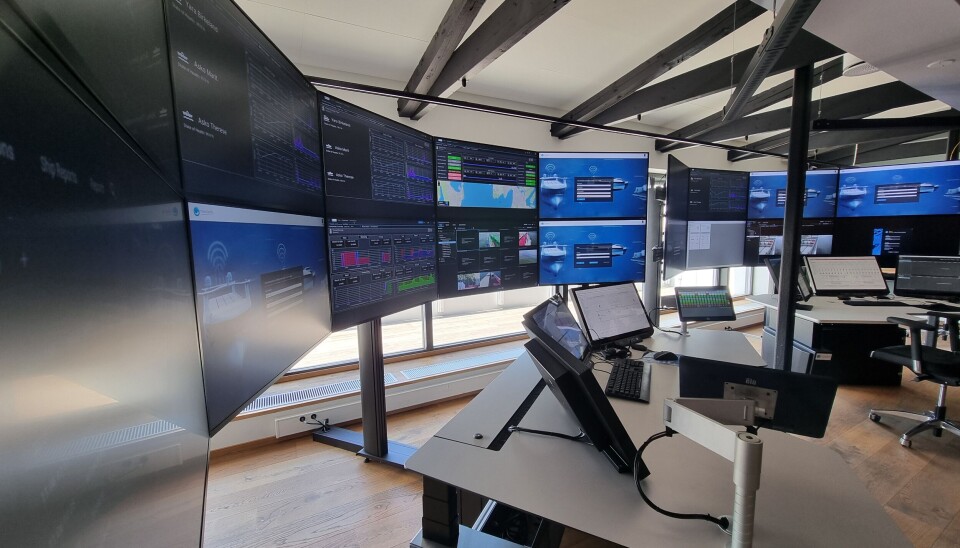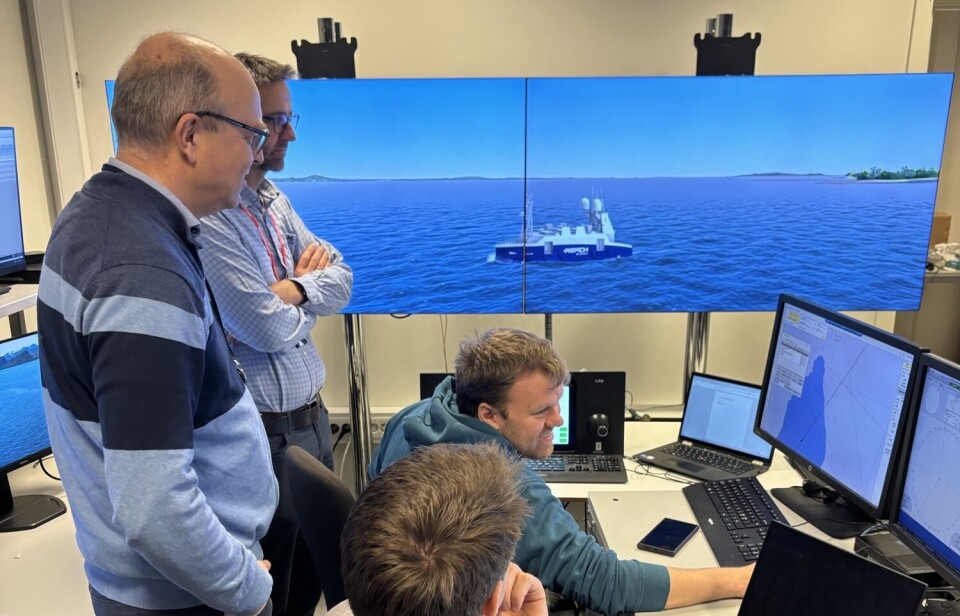
A recognition of a long collaboration
The goal for Massterly is to enable a shift in transport from road to sea through cost-effective, safe, and environmentally friendly logistics.
Massterly was founded in 2019 and began operating the following year. The company is a joint venture between Kongsberg Maritime and Wilhelmsen and can be described as a unique partnership between a leading technology supplier and an innovative shipping group.
“Kongsberg Maritime had some ideas about autonomy, and technology to make the use of ships more efficient, or competitive with other transport methods. It was difficult to get these ideas on board with traditional shipowners, while some cargo owners - first Yara, then Asko - found it interesting. None of these had any great desire to become shipowners; own the ship, perhaps, but to set up an entire operating organisation? Thus, the idea of a separate management company for unmanned, autonomous or remote-controlled ships was born,” Roger Trinterud, chief growth officer at Massterly, tells Skipsrevyen.
"Together we will take autonomous shipping from research to reality" is the company's slogan.
“Operating ships is something completely different from delivering technology, and in Wilhelmsen, Kongsberg Maritime found a partner with long and broad experience both domestically and in long-distance shipping. With this setup, it is possible,” says Trinterud.
Proud
Managing director Tom Eystø stated that: "You do get a little proud," when it became known to the company that this particular project ran away with the award for Ship of The Year.

“I think we are allowed to be, at least for a little while. But we must never stop thinking of new things. After all, this year's ship is primarily a recognition of an innovative design, and that Reach chooses to build in Norway. At the same time, design and technology are not enough to get permission to remotely control a vessel, so we like to think that it is also a recognition of the entire long collaboration between Kongsberg, Reach, and Massterly, through the construction process at Trosvik, and that the control centre and knowledge environment we are trying to build up here in Horten is right,” says Trinterud.
‘Reach Remote’ has undoubtedly introduced completely new issues for Massterly, and the first projects have been pure logistics operations between two defined ports.
“Now we can operate a vessel ‘anywhere’, perhaps also within the safety zones of oil companies, and develop routines for interaction between a captain in a control centre and an ROV operator who will sit in a completely different place. And not least working for a client like Reach, which is so forward-leaning and dares to challenge established practice - it's exciting!”
A shift in transport
Massterly offers services for customers' entire value chain for autonomous ships; from vessel design and approval from the relevant authorities, to control systems, logistics services, vessel operation, insurance, and any assistance with financing.
The goal for Massterly is to enable a shift in transport from road to sea through cost-effective, safe, and environmentally friendly logistics. Short-haul shipping today competes with cheap but polluting lorries that are stuck in traffic. Massterly points out that autonomy reduces operating expenses and opens up a new market for the maritime industry.
When it comes to the level of activity recently, Trinterud describes it as still "hurrying slowly".

“With ‘Yara Birkeland’ and fertiliser containers from Porsgrunn to Brevik, as well as ASKO's two RoRo vessels between Moss and Horten, we have had a good platform to develop on. The technology is in some areas untested, the authorities do not quite know how to deal with it, so there has been a lot of trial and error, and demonstrations,” he says.
Technology does not steal jobs
“Developing a completely new way of operating ships, where much of the responsibility lies with people on shore and not on board, and new work routines, has been a lot of work. In the beginning, we relied a lot on Wilhelmsen's internal systems and approvals, but in early 2024, Massterly got all internal systems approved, and is now the responsible operator of the vessels.”
In the beginning, there was a crew of five to six people on board ‘Yara Birkeland’, ‘Therese’ and ‘Marit’. These vessels were operated in the same way as most coastal ships.
“Now many of the systems around arrival/departure are automated, and the monitoring systems are connected to the control centre, and the boats sail with three men, and we hope to be down to two during this year.”
At the same time, more tasks will have to be done on land, so the total number of people involved will not be much lower.
“We often hear that ‘technology will take away our jobs’, but that is certainly not the intention, and we also do not think that very many fewer seafarers will be needed. However, they can work from home, deliver to the nursery and go to work. At the same time, as the technology and operating methods are approved, simpler boats can be built, because they do not need cabins, mess, sanitary facilities, and so on. Will there be a need for more seafarers instead? There is better space on the lake than on the road in many places,” says Trinterud.
So far in 2024
2024 has largely been used to prepare to be able to move the engineer on the Asko and Yara vessels into the control centre, and to build an organisation ready to receive Reach Remote 1 and 2.
“We already employed the first captain and engineer for the Reach vessels last year, and these, together with several others, worked hard with construction follow-up at Trosvik, ran simulator training, and worked with class and the Norwegian Maritime Authority, to make the process of getting unmanned approved remote-controlled operation as efficient as possible,” says Trinterud.

Today, Massterly employs 32 people, the majority of whom are sailors.
“When ‘Reach Remote 2’ goes into operation towards the end of the year, we still need even more employees who are curious about technology and want to shape their own, and perhaps an industry's, future working life.”
Will become a preferred partner
“Building roads, with bridges and tunnels, is not only extremely expensive, there are also major interventions in nature, and they entail large emissions. The combination of zero-emission technology and autonomy will make it possible to build smaller and simpler boats, and when these can be operated from a control centre close to the operator's home, in many, but not all, cases it will be possible to offer equally good services faster and at a lower cost by ship.”
The future in the maritime industry will primarily be characterised by the need for emission reductions, but also by a lack of qualified crew, Trinterud believes.
“Technology and the collection of knowledge are necessary to solve both. Perhaps being able to work/live in the same place, at least for periods of your life, can also make it more attractive to become a sailor?”
“We will become the preferred partner for everyone who dares to think outside the box; contribute to developing new concepts within autonomous and remote-controlled shipping; and become an employer seafarers want to work for,” adds general manager Tom Eystø.

